GHPC Early Access has been updated to version 20250630. This is a regular update, introducing new features, adjustments, and bug fixes. We've got plenty more in the works for GHPC! As always, you can get additional info by visiting our Discord server and YouTube channel. Links are on the GHPC website.
NEW VEHICLE: MARDER A1+ IFV
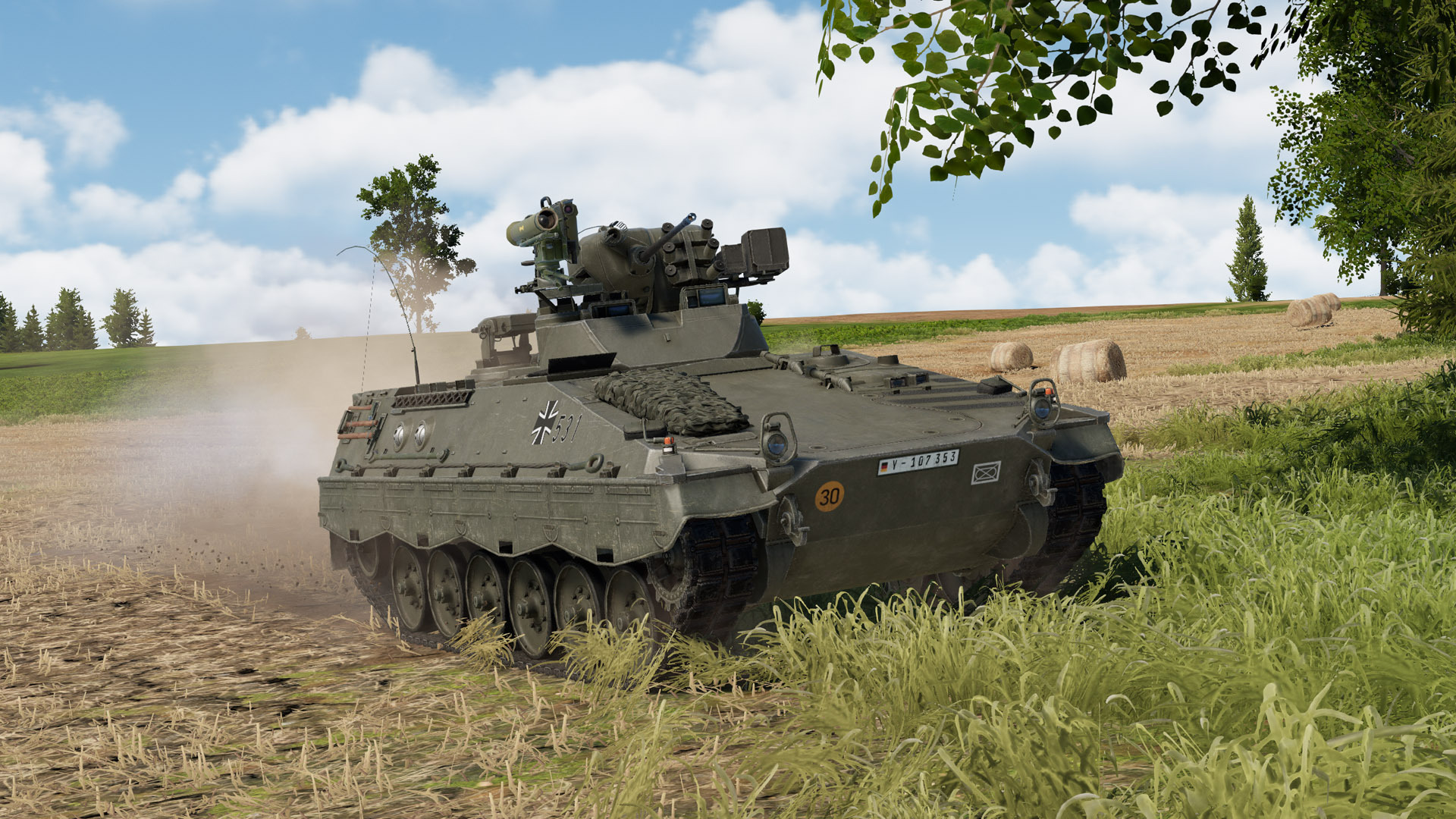
The existence of a Marder A1 minus in GHPC implies the existence of a Marder A1 plus, and sure enough, that variant arrives today. In the late 1970s to early 1980s, the Marder 1 was upgraded to the A1 standard, but not all of the upgrade vehicles could receive a thermal pointer sight. To distinguish the two sub-variants, a plus and minus sign were used. The A1+ version is the full upgrade, while the A1- version lacks the thermal optic. The plus variant was far more common in West German service with almost 700 examples, roughly double the number of the minus variant.
To reflect the commonness of the Marder A1+, it has been made the default vehicle in the existing Marder missions.
The night vision change is the only meaningful difference between the two Marder A1 variants. However, depicting this system is anything but simple.
THE MYSTERY OF THE THERMAL POINTER SIGHT
In articles on the history of the Marder IFV, the thermal device on the Marder A1+ usually receives nothing more than a brief mention in passing. The original name is "wärmeortungsempfänger" (WOE), and articles tend to refer to it using phrases like "thermal sight", "thermal imager", "heat detector", or "heat locator". Some Canadian crews called this kind of vision device the "thermal pointer", which is the name our team ended up favoring.
It would be understandable to simply conclude that this is a standard forward-looking infrared (FLIR) optic like the one on the Abrams or M60A3 TTS, copy that device onto the Marder 1A1, and call it a day. But we didn't want to assume anything, and there were intriguing discrepancies in the summaries, such as implying that there were both thermal and basic IR night vision optics present. We needed to find something more concrete. What did the thermal sight on the Marder A1+ actually look like?
The first problem we faced is that the device, for all intents and purposes, no longer exists. It was eventually supplanted by a standard thermal sight (WBG) in the Marder 1A2, and examples of the earlier sight were stripped out and discarded as the fleet was upgraded. In the modern era, the Marder in German service holds no clues regarding its progenitor, and even if we were to find crew members eager to explain and document their tools, none of it would help reach our goal. There are also some examples of the old PERI Z59 WOE sight unit in private collections, but they don't seem to be hooked up and operational, let alone well documented.
Making matters worse, access to the Bundeswehr archives is currently locked down due to security policies related to geopolitical events. Getting permission to search for 40-year-old technical manuals is less achievable today than it was for game developers a decade ago, especially as foreigners. Our efforts in this area have been met with a firm dead end, for all West German vehicle platforms. This forces us to find more creative ways to access information.
There are plenty of military veterans in the world who, in their youth, crewed a vehicle with this type of thermal pointer system. We have been able to find firsthand accounts from some of them. But memory is a tricky thing, and beside that, each person may interpret things uniquely depending on what details stand out to them. Those interpretations included, paraphrased:
"It's red dots."
"The gold sparkles show where the targets are."
"It's like Tetris blocks."
"They dance around and blink on and off."
What a mess! It's abundantly clear even from these strained recollections that we're not dealing with a regular thermal sight here. But even if we trust all of these statements, there's not enough here to confidently recreate the device in GHPC. We needed to find more.
UNEARTHING HISTORY
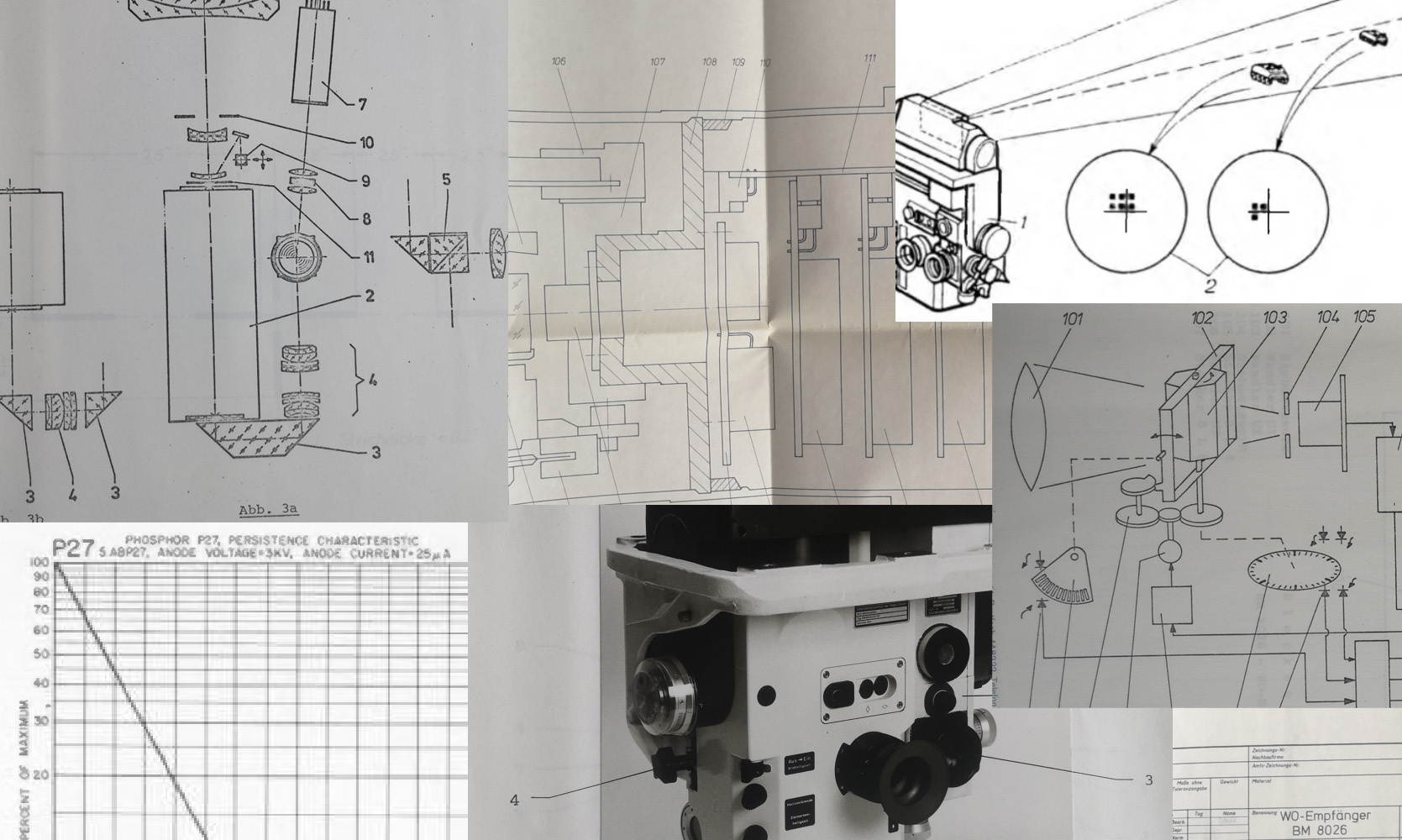
The breakthrough came when our vehicle lead painstakingly tracked down and acquired a trove of documentation: physical user manuals, technical drawings, and manufacturer specifications. (It turns out, tamping down on information security doesn't delete paper copies that were already out in the world.) This revealed everything one could want to know about the Marder A1+ and the WOE. But in the usual style of Cold War era manuals, the only documentation of the sight picture was a black-and-white line drawing, an artist's impression. It showed a standard crosshair with some dots in part of the scope, arranged in a grid pattern. Clearly, the real knowledge would have to be found in text.
As we reviewed the documents, we built a prototype of the thermal sensor. Each time we found a new piece of information, we altered the in-game version to match. By carefully searching and cross-referencing the paper documents, we were able to put together a list of reliable facts:
The thermal sensor's output is superimposed on a standard green intensifier night vision sight
The sensor's field of view is non-square, 6x2 or 7x2 degrees, leaving part of the sight not covered
The heat signature is displayed as flashing red dots
The dots are arranged on a fixed "checkerboard" pattern rather than smoothly following the target image
The resolution of the sensor is 60x20
The refresh rate is 2 Hz (twice per second)
The "momentary field of view" (single scan line) is 1.9 milliradian
The phosphor compound is "P27"
Finding the phosphor compound sent us into a small rabbit hole of research papers on phosphor excitation, where we were able to further discover:
The phopshor appears in the reddish-orange color range, but its color is influenced by the amount of excitation
The excitation decays 90% in 27 milliseconds, meaning the dots disappear quickly
Now we just needed to know the actual behavior of the scanning and refreshing process, and the technical drawings of the sensor unit's internals proved vital for this. We discovered the way the prism and cam wheel are set up, which with a bit of inference revealed:
The system makes rapid horizontal sweeps, causing each row of dots to appear nearly (but not quite) all at once
The active area is swept with a unidirectional top-to-bottom vertical pass twice per second, with an instant reset
The result of all this detective work was that we took this system, which doesn't exist anymore and whose details are stubbornly guarded, and implemented it in full fidelity in GHPC:
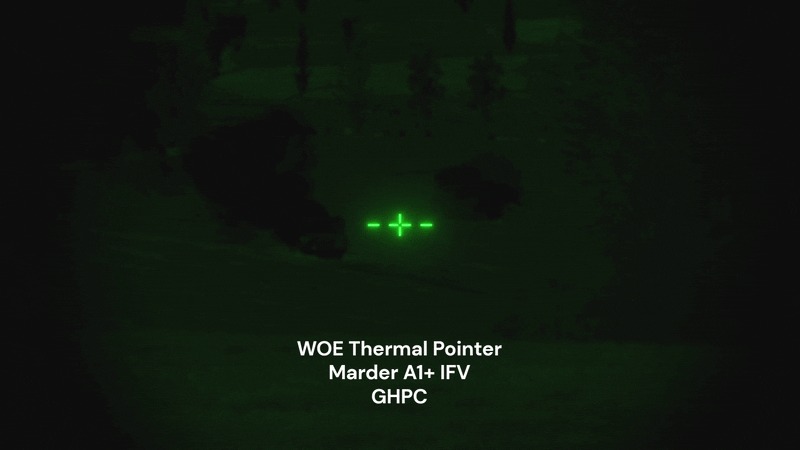
As far as we know, this is the only existing depiction of the Marder A1+ thermal pointer system in a video game. It's a fascinating piece of transitional tech, and we hope our efforts to simulate it will help people appreciate the intricacies of that single footnote in West German armored vehicle history.
USING THE THERMAL POINTER
The heat detection sensor is useful for detecting hot spots up to around 2 km away in the night vision sight view, or at least the letterboxed rectangular portion covered by the thermal pointer. (The very top and bottom of the sight will not respond to heat signatures, as there are no sensor dots overlaid there.) We've tuned the default contrast and threshold settings of the thermal pointer to reliably highlight enemies and ignore terrain.
You can toggle the display of the thermal pointer output on and off using the new night sight mode control, which is LCtrl plus your night sight key (default: LCtrl + T). When the thermal dots are disabled, the sight is still fully functional as a passive intensifier optic.
Despite the improved night vision system, you still have the option to use your Marder's infrared searchlight to improve the brightness and vision range. Like all other active illuminator systems in GHPC, the tradeoff is making yourself instantly visible to peer adversaries with their own night vision, who perceive your searchlight as a beacon leading directly to you.
THERMAL VISION OVERHAUL
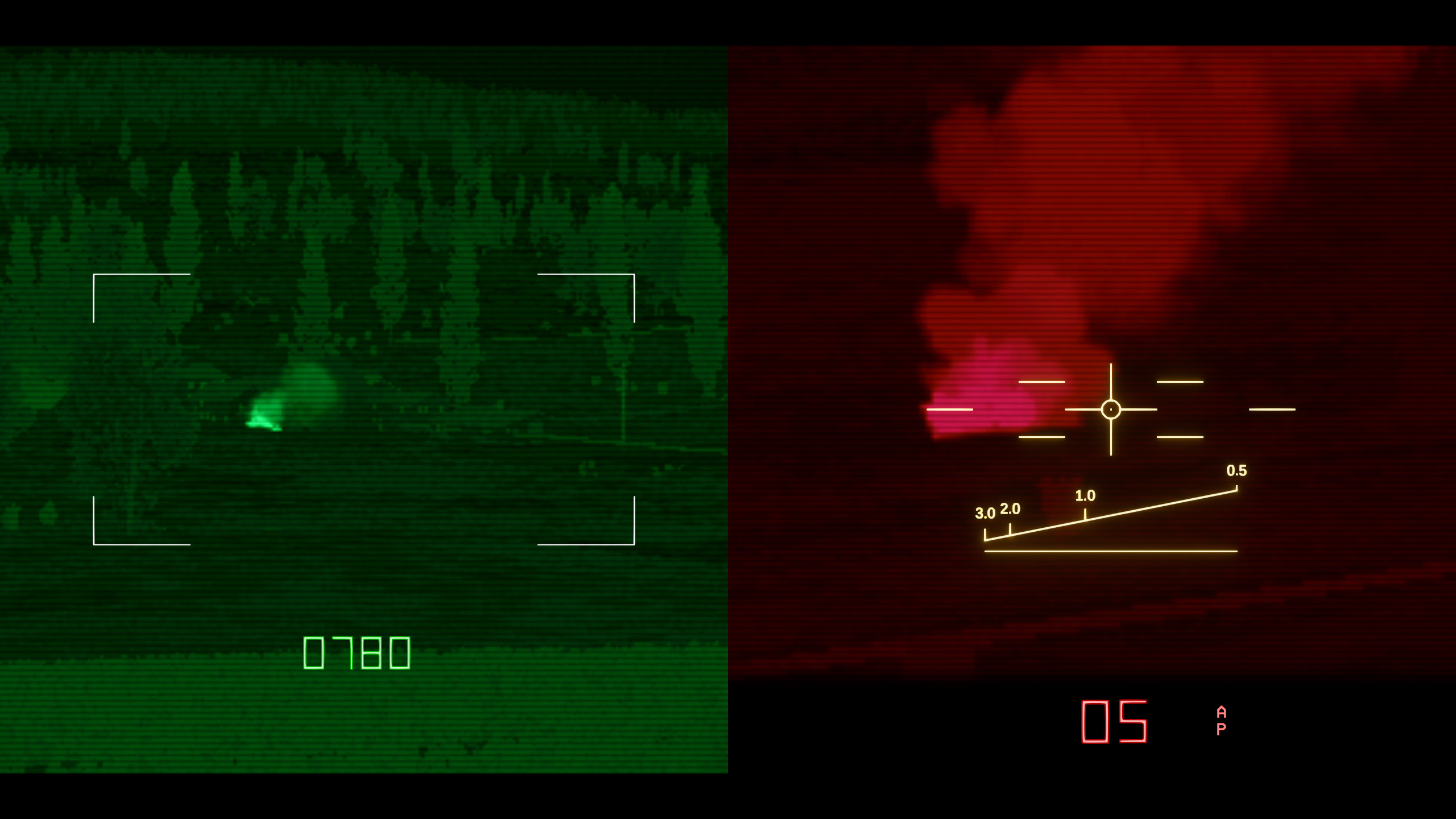
As part of our work in actually implementing the thermal pointer sight, we made several improvements to the thermal vision rendering in the game. These mostly keep the current visual signatures, aside from small fixes like making sure troops consistently show up as warm, but they also set the stage for additional thermal rendering features we're considering for the future.
For this update, there are more direct changes to the GHPC thermal optics:
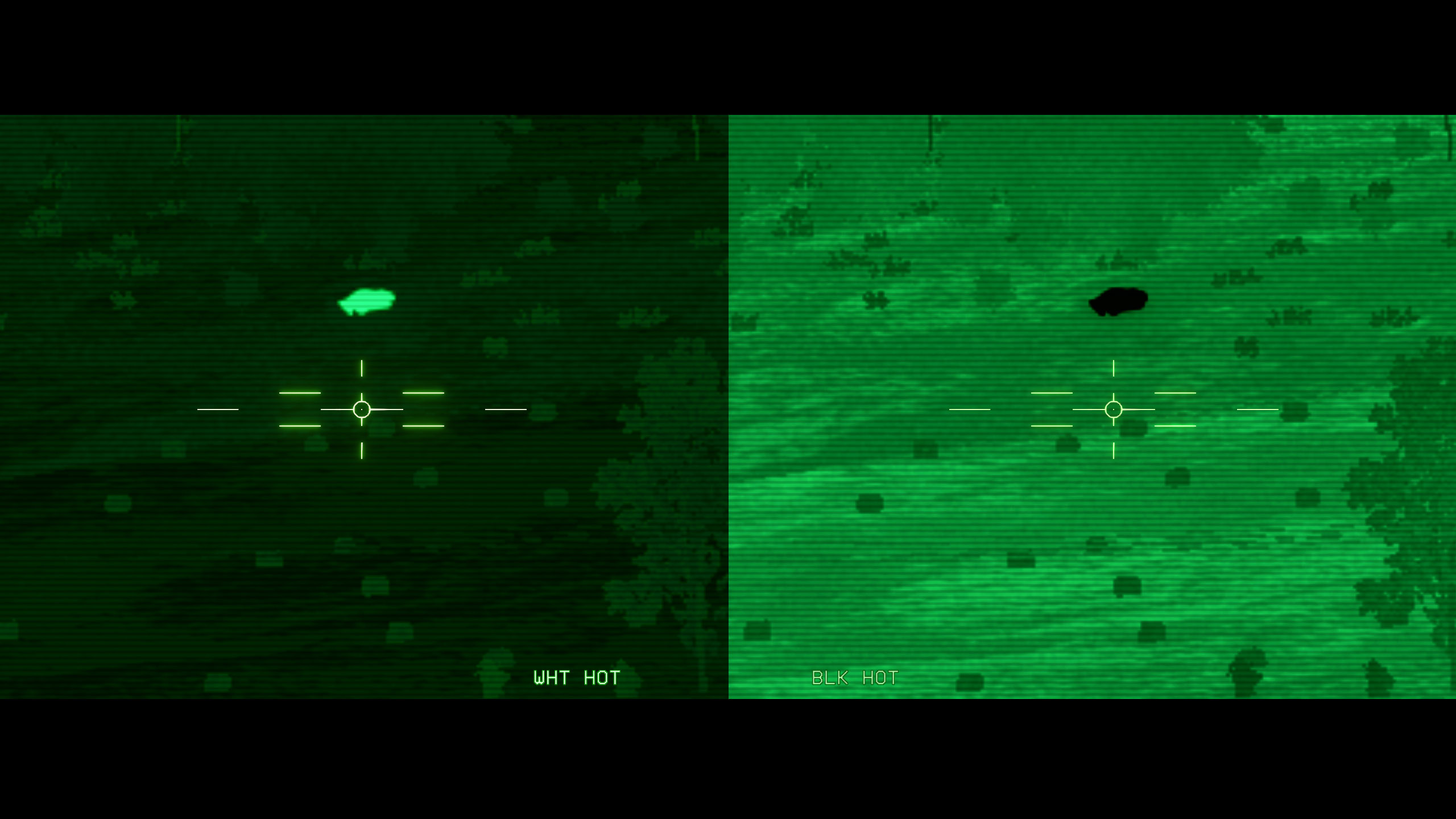
All thermal sights have been updated to feature their real fidelity/resolution settings (no more getting a better thermal sight picture with a larger PC monitor)
It is now possible to change polarity between white-hot and black-hot using the new night sight mode feature (press left Ctrl plus the night sight key)
The visual effects for the thermal sights have been made to resemble the screens they were historically displayed on more closely
The Bradley now properly displays yellow reticles in the thermal sight
The M60A3 TTS sight now displays the "BLK HOT" label when in black-hot mode
Color settings and contrast have been adjusted
MANUAL RELOADING
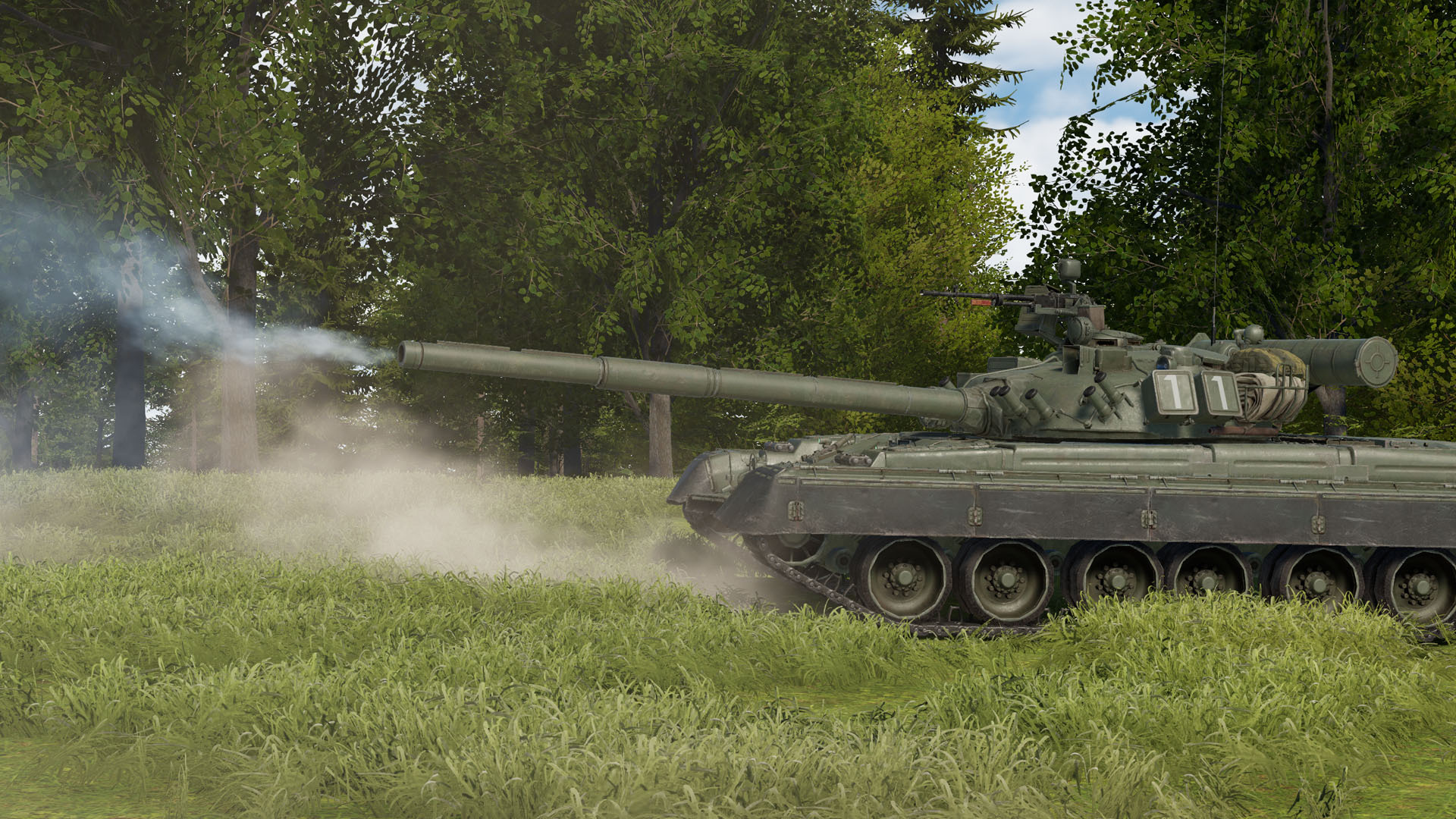
In real tank crews, the procedure for reloading the main gun can vary greatly from country to country. Depending on what style of loading system they use and what doctrine they favor, they may instantly reload the current ammunition type as soon as a shot is fired, or they might prefer to wait for a new target to choose the next round. In the past, GHPC has exclusively used the American reloading style: loading the queued round as fast as possible after the gun fires. Beginning with this update, that is no longer the case.
We now have each vehicle set up to use a reloading method that suits its country and weapon systems. The American and West German tanks will continue to use instant reloads. The Soviet-designed tanks will wait for a reload command, which you can issue using the new Reload keybind (default: R) or by selecting a new ammo type number. Among other things, this should be a big help for beleaguered T-55 gunners trying to watch their shots fly before the reload forces the scope off target!
You may prefer the old system, where every reload is automatic. Or maybe you want to make them all manual. In these cases, just head to the game's settings page and use the new reload option to select between always-auto, always-manual, or the default vehicle-aware setting of "doctrinal".
AUDIO IMPROVEMENTS
While the visual team were hard at work on the thermal pointer and thermal rendering changes, our audio engineer completed a series of improvements to the game's soundscape. These included making the Marder's engine sound more like it does in reality. The loudness and audible range of various weapon systems has also been adjusted, making things more consistent and preventing cases where a specific weapon would be incredibly loud compared to similar types. And once again, there were additional changes under the hood that will make it easier for us to make future improvements.
As always, there's plenty more cooking for the future. We're hard at work on the next gameplay features for GHPC and hope to introduce them soon. For now, we hope you enjoy the update and the unique deep dive into Cold War AFV history that made it possible. Be sure to check out the full change log below!
CHANGE LOG
NEW CONTENT
Added Marder A1+ IFV with unique "thermal pointer" night sight
Added ability to switch night sight mode or polarity (default: LCtrl + T)
FEATURES AND ADJUSTMENTS
Added manual reloading feature (default behavior can be changed in game settings)
Overhauled thermal sight rendering to use more realistic resolutions and image effects
Improved Marder engine sound
Improved MG3 exterior sound
Improved consistency of audible distance and falloff effects for various gun and explosion sounds
Made Marder A1+ the standard variant in missions
Optimized several aspects of vehicle driving physics for performance
Optimized infantry ragdoll physics for performance
Auto-sorted loose vehicles in swap menu
FIXES
Fixed incorrect gearing on Marder
Fixed armor issues on Marder hull that made it extra vulnerable to small caliber threats
Fixed an issue that could result in troops not posing in AAR mode
Fixed Bradley reticles showing as red instead of yellow in thermal sight
Fixed incorrect infantry and helicopter crew casualty counts in mission results
Fixed dismounted infantry showing up as cold in thermal views
Fixed a squealing audio artifact on certain cannon blast sounds
Fixed an issue that caused 3BM8 ammo in racks to not respond to impacts
Fixed various issues that could lead to audio cutting out
Fixed some audio effects being noticeably too loud at distance
Note: The game was patched several hours after the initial release in order to make the black-hot mode color balance on green FLIR optics less harshly bright.

Changed files in this update